The Larapinta Trail is one of Australia’s most famous and beautiful walks, spanning the West MacDonnell Ranges in the Northern Territory. This 223-km journey shows off some of the most stunning views and landscapes in Australia, a true wilderness experience. From the Alice Springs Telegraph Station, the trail passes through Ormiston Gorge, Serpentine Gorge and Euro Ridge, giving you the chance to get amongst the ancient desert landscapes of Australia. From the rocky ground to the desert vistas, the Larapinta Trail will be an adventure to remember.
The Adventure Starts
Hiking the Larapinta Trail starts at Alice Springs, at the foot of the Heavitree Range. The starting point at the Alice Springs Telegraph Station is full of history dating back to European settlement and the early days of the telegraph. As you leave Alice Springs behind, you’ll be greeted with a variety of rugged terrain, sandy creek beds and narrow bush tracks that lead to stunning views over the arid desert. The adventure requires a good level of fitness, especially for those tackling the uneven ground that ranges from rocky outcrops to mountains. The journey ahead will test your endurance, but the natural beauty and solitude will reward every step of the way.
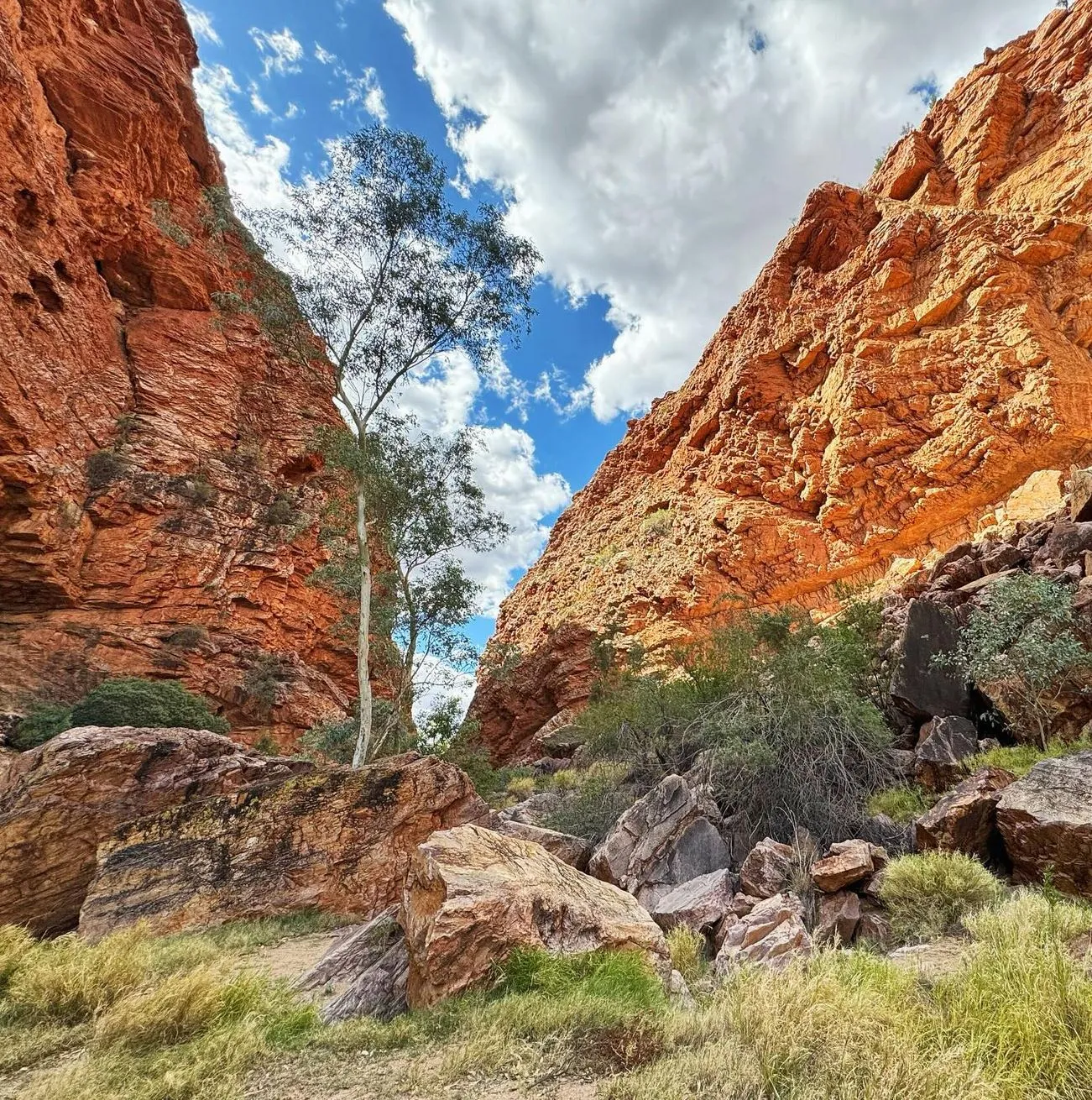
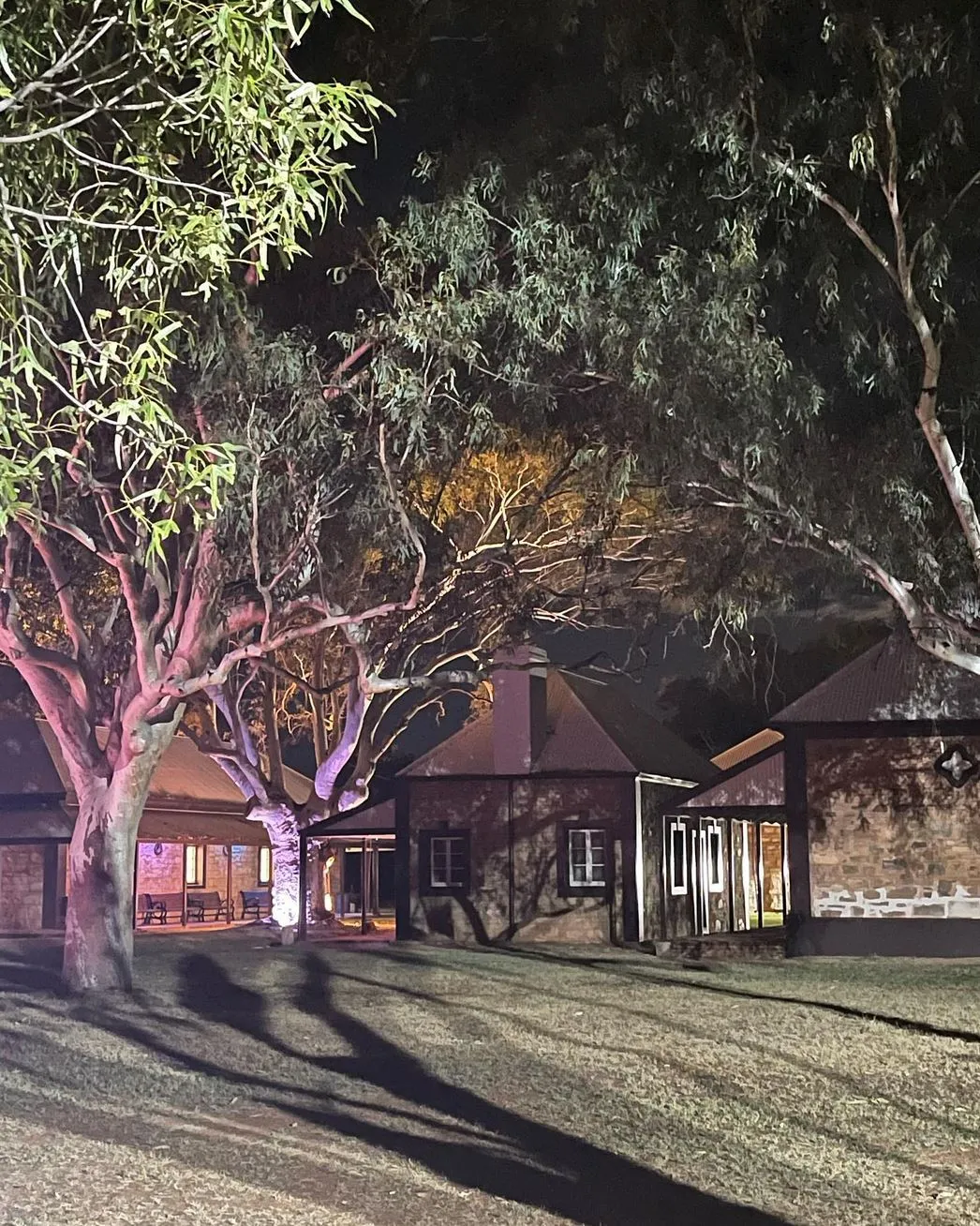
Old Telegraph Station
The Old Telegraph Station is an institution and the start of the Larapinta Trail. This was the communications hub for early European settlers and offers an insight into the history of the region. The station also has a water tank, which is essential for those starting the hike. Situated in a beautiful spot, the Alice Springs Telegraph Station is the perfect introduction to the Larapinta Trails’ natural and cultural heritage. Here, you will find the gateway to the adventure where the desert meets the traditional owners history.
Euro Ridge
Euro Ridge is one of the most scenic spots on the trail, with views over the MacDonnell Ranges. The ridge is a challenging but rewarding climb with stunning views of the surrounding mountains. From Euro Ridge, you can see out over the desert landscape, including Simpson’s Gap and the surrounding hills. The views and rugged beauty make Euro Ridge a popular stop for Larapinta Trail hikers and the perfect place to rest and take in the views.
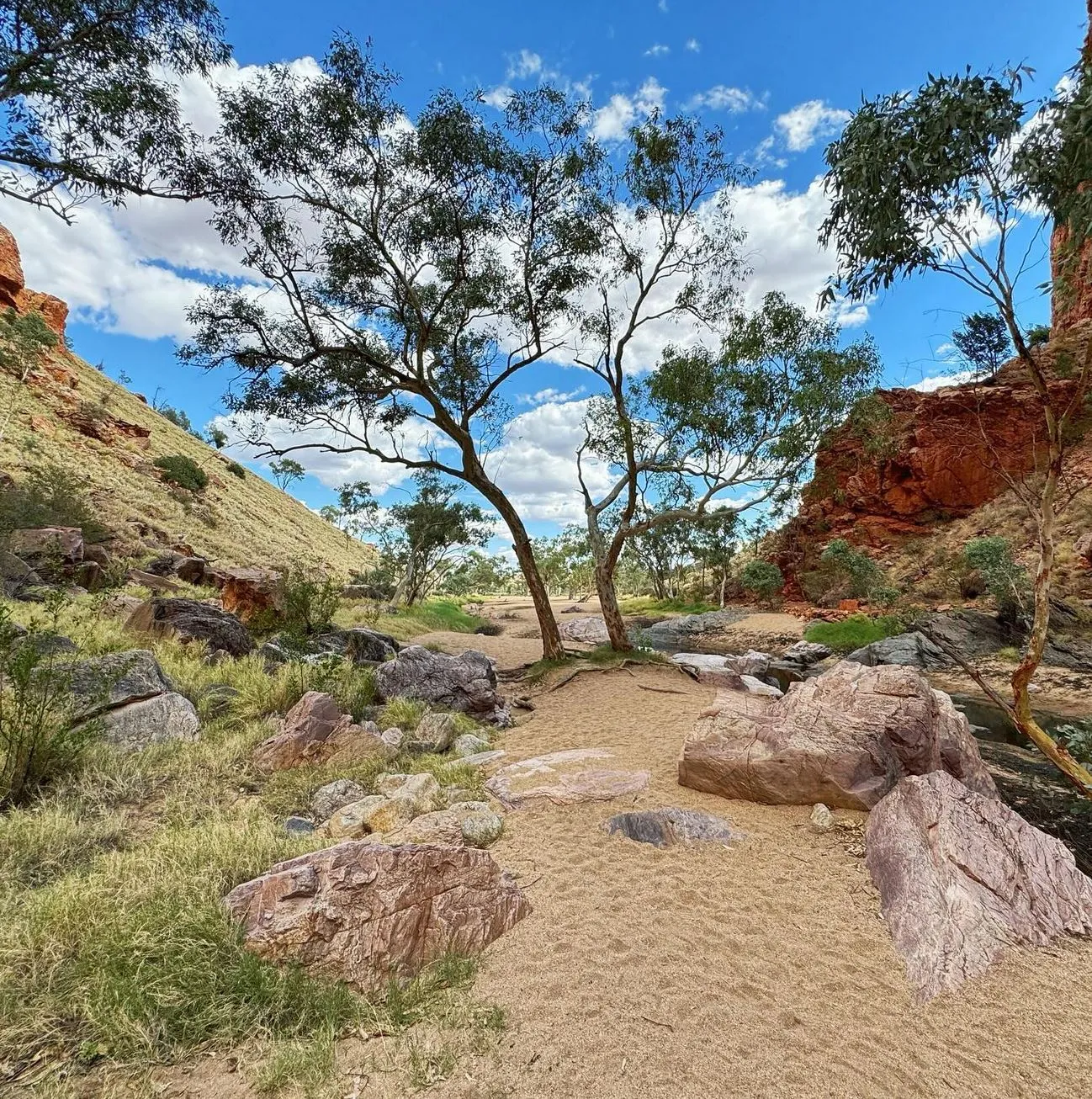
Simpson’s Gap
Simpson’s Gap is one of the Larapinta Trail’s highlights, a peaceful and picturesque experience. The narrow gap between the cliffs is a beautiful geological feature, and the surrounding landscape is home to rock wallabies. The dry riverbed and sandy creek are tranquil spots to rest. Simpson’s Gap is scenic and culturally significant to the traditional owners, so it’s a favourite along the whole trail. You can also explore
Standley Chasm
Standley Chasm is one of the highlights of the Larapinta Trail, with its narrow red rock walls glowing in the midday sun. The walk to the chasm follows a narrow bush track through desert vegetation to this stunning rock formation. The chasm, with its geology, is an opportunity to see the real Australian desert. The sunlight on the rocks makes it a popular spot for photos. As you walk through the area, you also learn about the cultural history of the land, adding another layer of history to the journey.
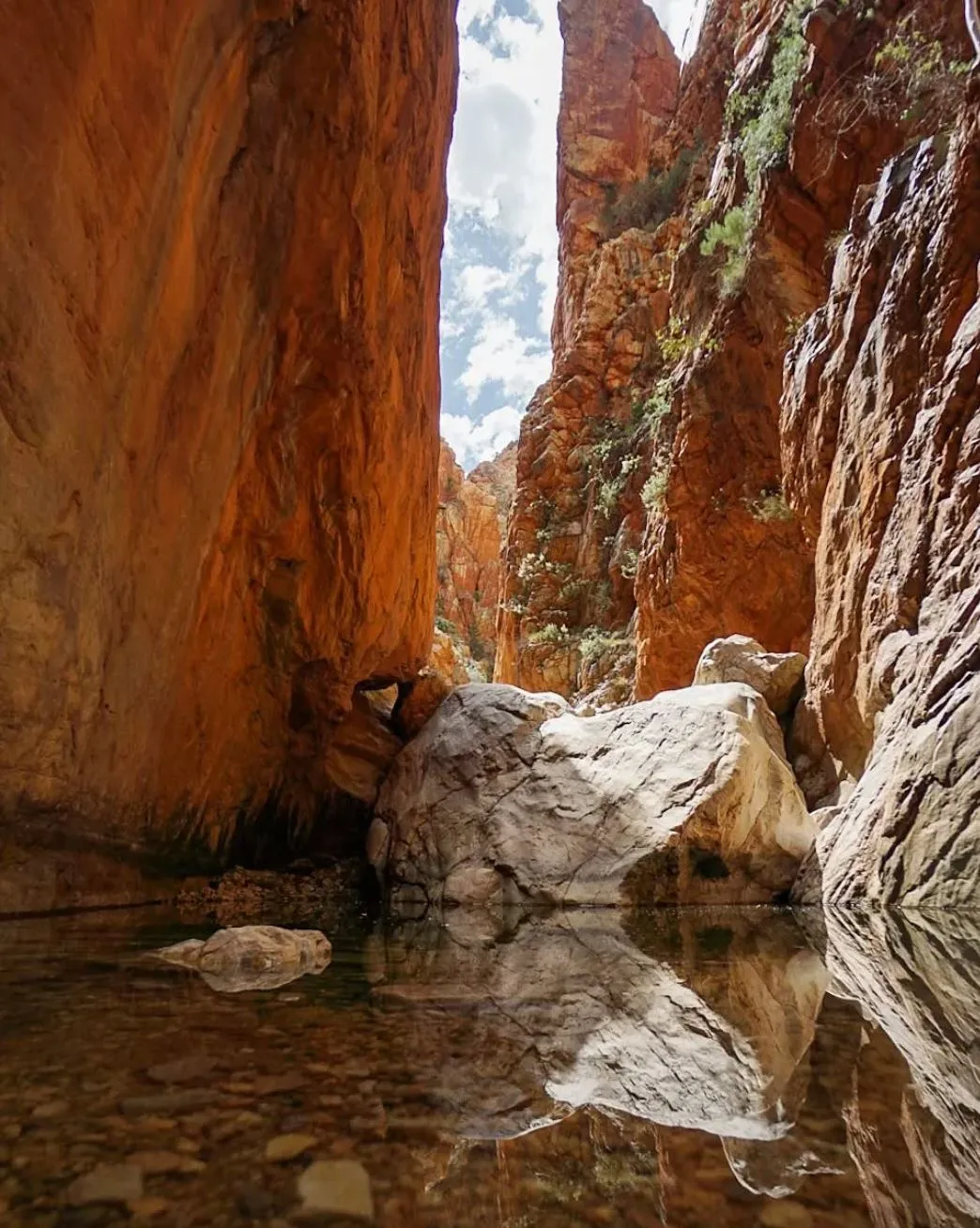
Serpentine Gorge
Serpentine Gorge is a peaceful and secluded spot with great views over the hills. The gorge is in a remote section of the trail and has rugged terrain, rocky outcrops and a dry riverbed. While walking in this area, you can spot wildlife, birds and rock wallabies. Serpentine Gorge is a great spot to stop and rest in the shade and enjoy the peace of the environment. The gorge also has natural water sources, so it’s a good spot to stop and rehydrate on the trail.
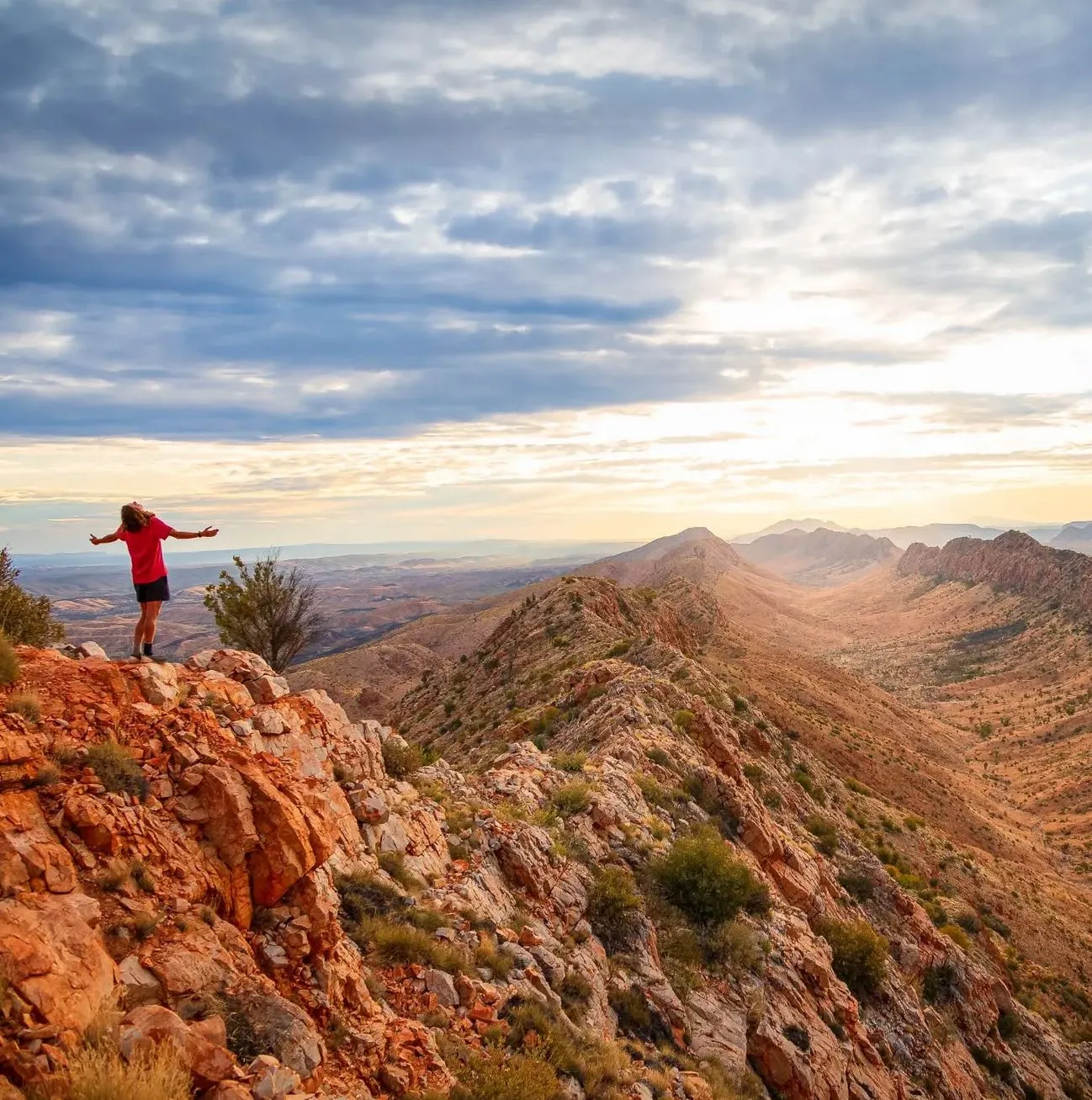
Counts Point
Counts Point is one of the best views on the Larapinta Trail, with 360-degree views over the West MacDonnell Ranges. The climb to Counts Point is hard but the views from the top are unbeatable. From here, you can see out over the desert landscape, Ormiston Gorge and Redbank Gorge. The high ridgelines and rocky terrain gives you an amazing view of the desert landscape, Counts Point is a must see on the Larapinta Trail.
Ochre Pits
The Ochre Pits are a natural wonder, red, yellow and orange colours against the desert landscape. This site has been used by Indigenous Australians for thousands of years to collect ochre for ceremonies. The geology is fascinating; layers of rock tell the story of the land. Visiting the Ochre Pits is an opportunity to learn about the cultural significance of the site and be amazed at the natural beauty. The colours of the ochre against the roughness of the desert is one of the most photogenic spots on the trail.

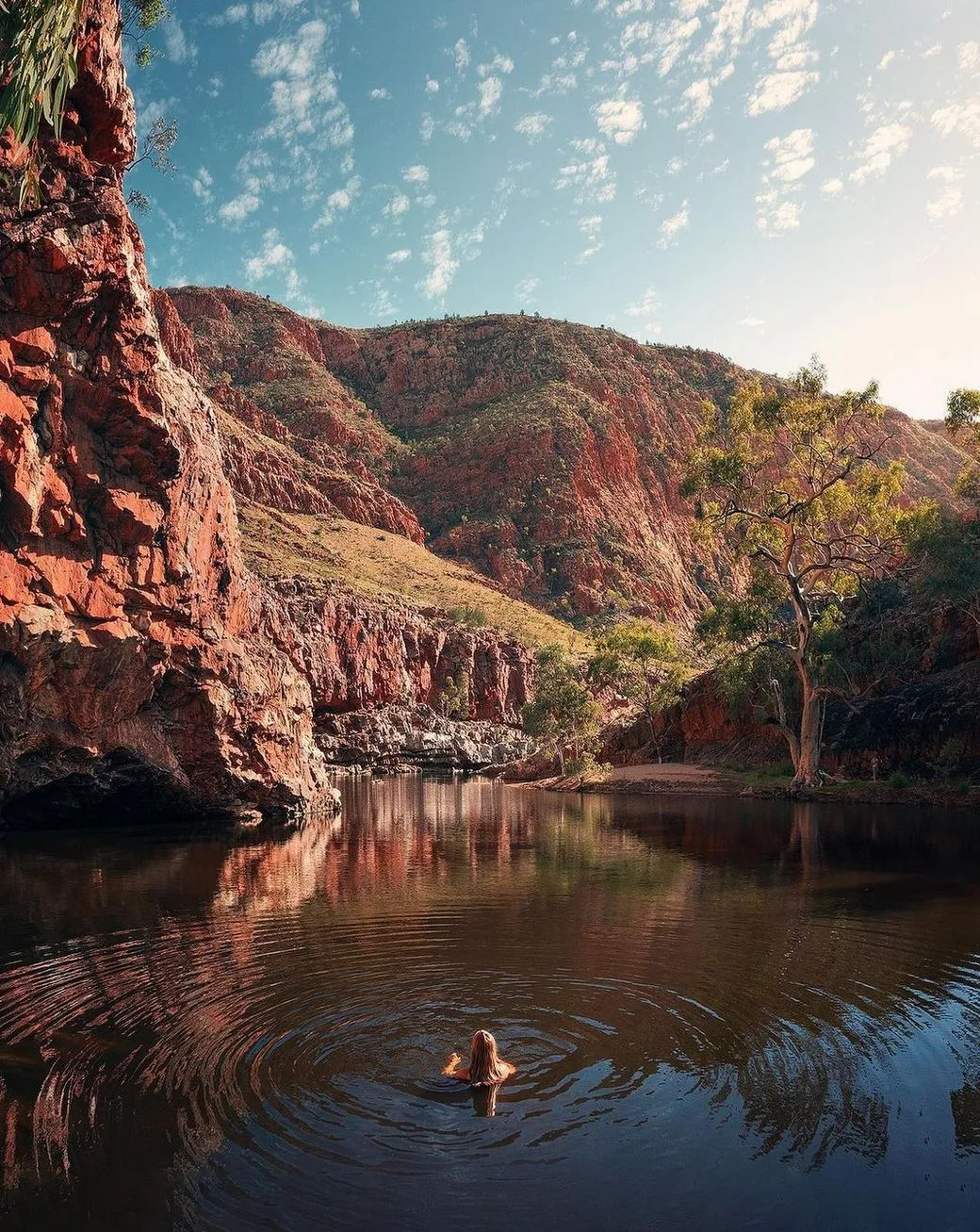
Ormiston Gorge
Ormiston Gorge is one of the biggest and most popular gorges on the Larapinta Trail. It’s got waterholes, stunning rock formations and heaps of wildlife. It’s a must-see. You can cool off with a swim in the waterholes surrounded by the rugged MacDonnell Ranges. There’s birdlife here, including peregrine falcons and spinifex pigeons, so it’s a great spot for bird watching. Ormiston Pound is also a vast sheltered area with breathtaking views of the surrounding mountains.
Finke River
The Finke River is one of the oldest river systems in the world and has great cultural significance to the traditional owners of the land. Crossing the Finke River on the Larapinta Trail is a chance to see one of the most important natural features in the area. The riverbed is usually dry, but after rain, the Finke River comes to life with water and greenery. The river is a water source for hikers and adds an extra layer of beauty to the journey.
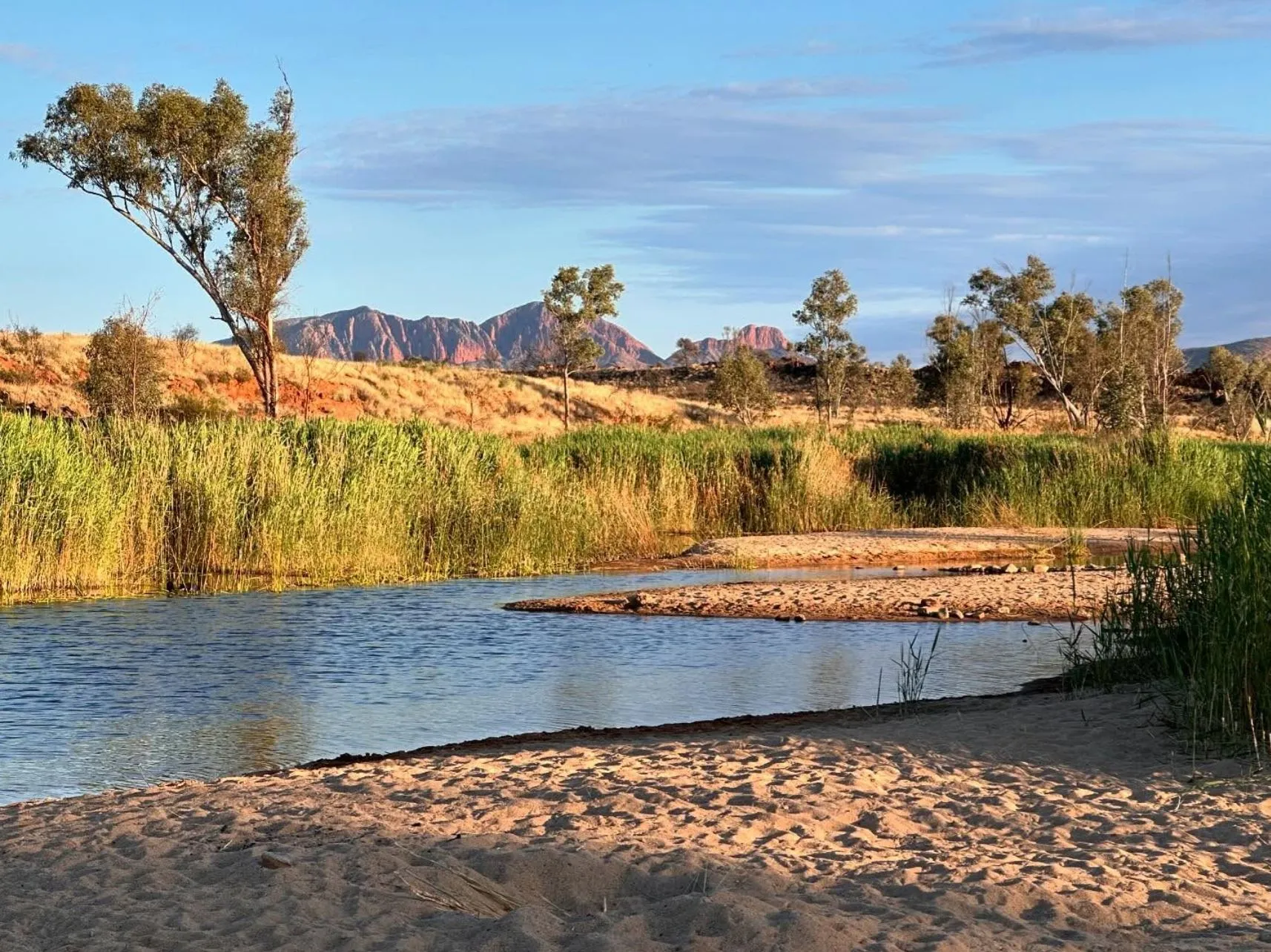
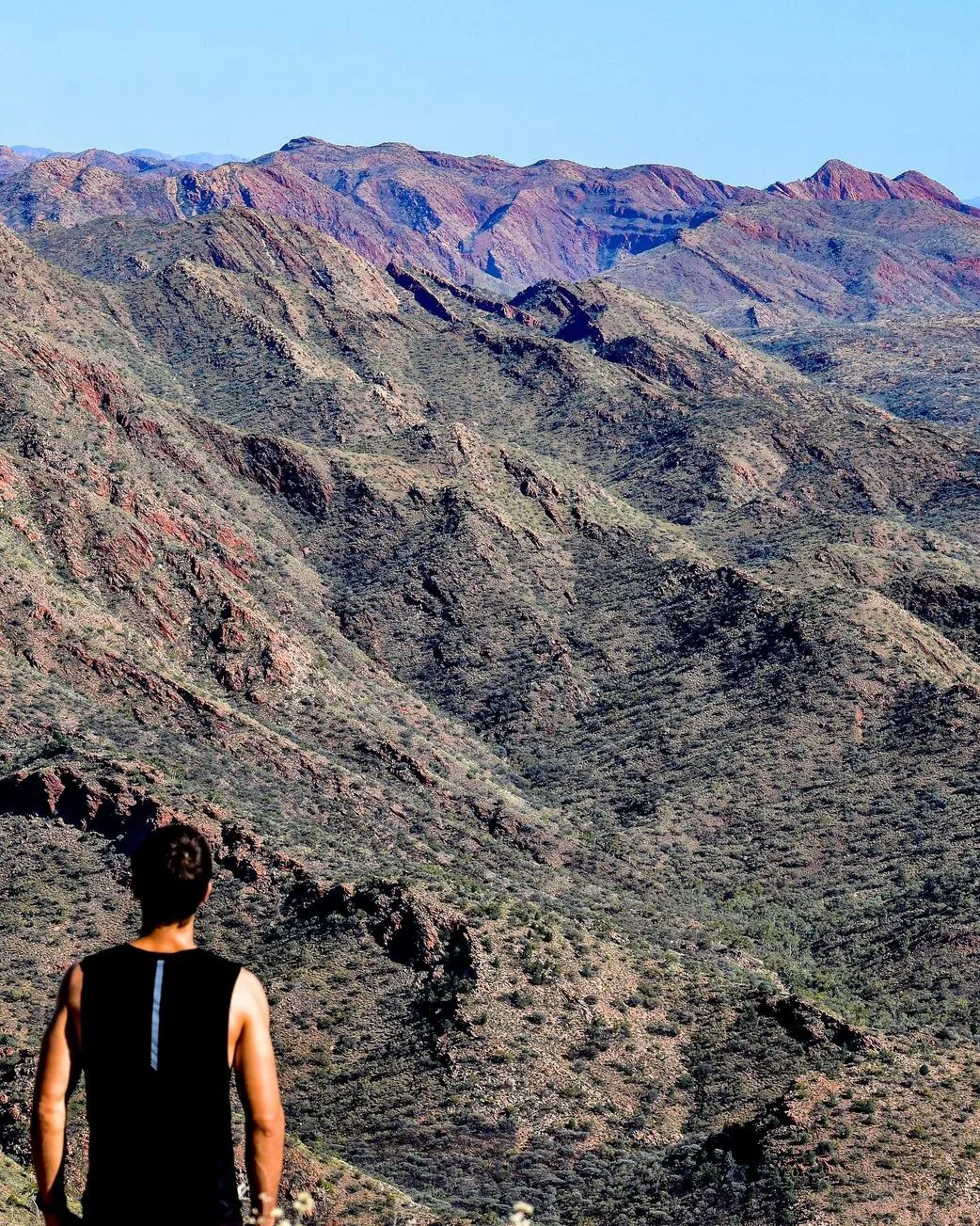
Brinkley Bluff
Brinkley Bluff has some of the best views on the Larapinta Trail. The climb up is challenging, but the views are worth it. From the top, you can see the desert and mountains of the West MacDonnell Ranges. The rocky ridgelines and deep gorges. It’s a perfect spot to stop, take in the views and appreciate this remote landscape. The views from Brinkley Bluff are awe-inspiring and are some of the most memorable parts of the trail.
Mt Sonder
Mt. Sonder is the highest peak on the Larapinta Trail and has one of the most spectacular sunrises in the region. The climb is tough, but the 360-degree views from the top are worth it. From the top, you can see the desert stretching out in every direction and the rugged terrain of the West MacDonnell Ranges below. The sunrise over Mt. Sonder is one of the most iconic moments on the Larapinta Trail and a great way to start the day. Reaching the top is a great feeling for any hiker and the culmination of an epic adventure.
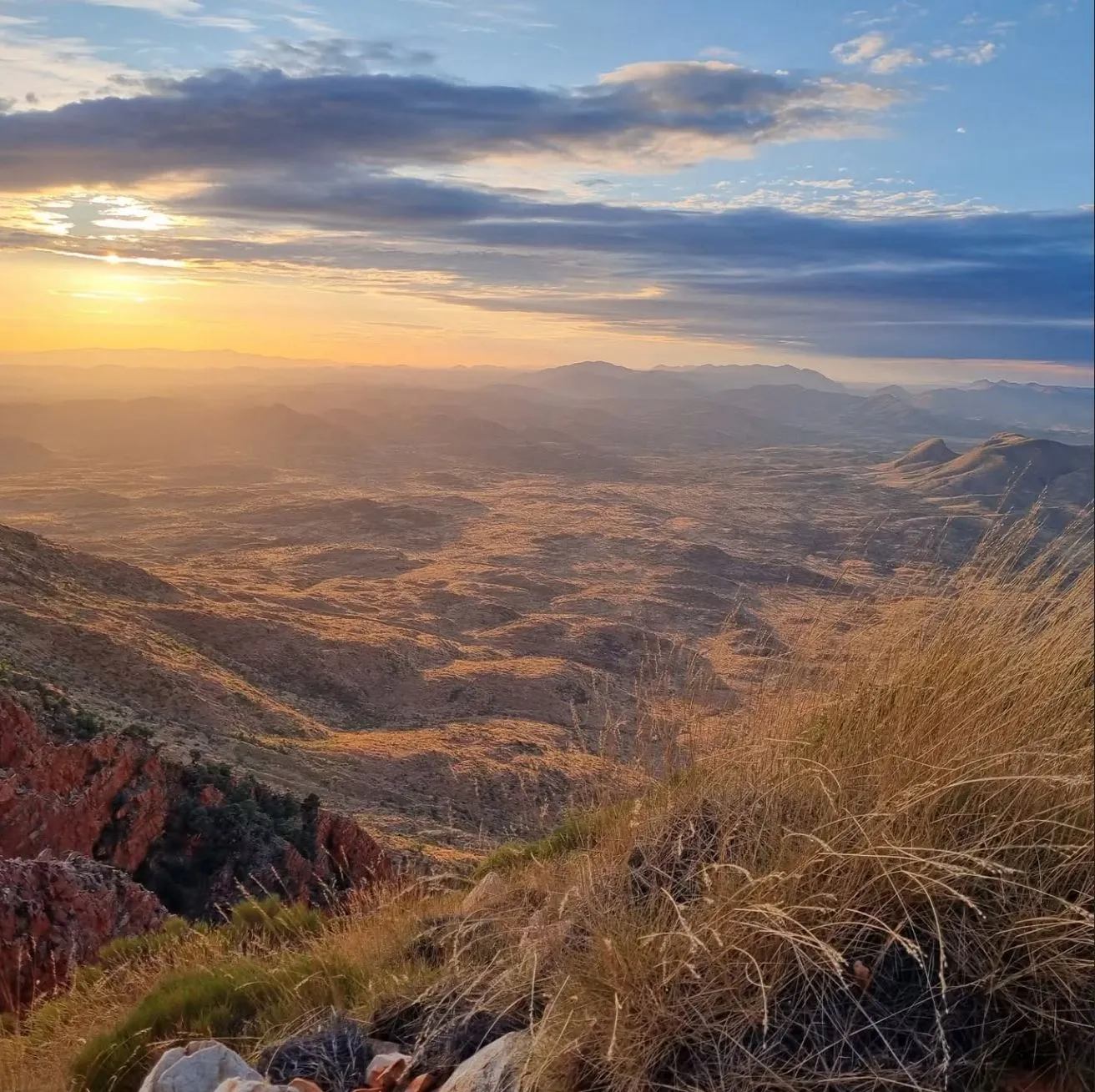
The Larapinta Trail is a hiker’s heaven, with some of the most beautiful and diverse landscapes in Australia. Whether you like towering mountain peaks, serene waterholes or breathtaking gorges, this trail has something for everyone. Exploring these views will be an experience you’ll never forget, and you will get to immerse yourself fully in the Australian Outback.
FAQ
Is there phone reception along the trail?
It’s unlikely that you will be able to get phone reception at the campsite. There is a sporadic and limited Telstra signal on some high points of the trail and an Optus signal at Ormiston Gorge, which we will visit most days after trekking. However, it is best to prepare for no reception and advise your loved ones accordingly – enjoy switching off and returning to nature! Our guides are equipped with satellite phones and extensive remote first aid kits to stay in touch with our operations team in Alice Springs.
What level of fitness is required for the Larapinta Trail?
Good hiking fitness is required and will ensure you will have the best possible experience on your adventure. Please ensure your fitness level is appropriate to cover between 11km to 16km of graded trail per day, carrying a small daypack (approx. 7-10 kg) with all your trekking requirements such as water, sunscreen, snacks, camera/ phone, and any other personal items. On average, we will be trekking 6-9 hours daily, including breaks. Some days you may find that you are tired and mentally challenged. Still, a positive attitude and the support from your hiking peers and guide will keep your feet moving, and you will be rewarded with stunning scenery and a sense of accomplishment that you will cherish for a lifetime.
Is there electricity in the tents or at camp?
Due to the remote nature of our permanent campsites, we do not have reliable electricity and charging facilities in our campsites/ tents. We do offer some 12v charging that is powered by solar, but this can be intermittent therefore, we recommend bringing power banks to charge your electronic items. There is no 240v charging available.
Do I need to bring a sleeping bag?
Auptopia supplies all bedding, including linen, sleeping bags, pillows, and blankets. However, if you prefer to use your own, you can, of course, bring it. Alternatively, consider a sleeping bag liner for more thermal warmth, a smaller option to carry with you on the plane.
Do I need hiking poles?
It is optional to have trekking poles. If you usually hike with trekking poles or prefer them for extra support/ mild injuries such as bad knees, bringing a pair along is an excellent idea. Ensure the trekking poles have rubber on the points so that no damage is done to the bricks on the wall. You will need to pack these in your checked luggage for the flight.
Do I need a head torch?
It is compulsory to bring one as you will be trekking early in the morning (Mt Sonder sunrise trek starts at approx. 3 am) and for navigation around the campsite at night as there is only limited solar lighting
What should I wear while hiking?
It is important to make sure you are comfortable. Check the weather forecast before departure, as temperatures can be variable. The best tip for trekking clothing is to wear layers. You will need to bring warm clothes, including long pants, a good jumper, a windbreaker, a beanie, a scarf, gloves, and good woollen socks for summit day (Mt Sonder). You will be entirely exposed during the day, so a good hat and sunscreen are vital. Depending on the season, there can be many flies in the outback, so please consider taking a fly head net with you.
Will I need to carry a full pack?
No, you will only be required to carry your day pack with items necessary for each section of the trail. Your main luggage will be kept in your tent at our permanent campsite.
What happens if I am unable to participate in some of the hikes?
You may opt out of a day’s walk if you are unwell or have a mild injury. Autopia will require you to sign an “early release” form, and you can spend the day in our permanent campsite or at Ormiston Gorge, which has a café area and a beautiful waterhole/ beach area to spend the day. The group will spend time at Ormiston Gorge after most daily walks, making it a convenient rendezvous point.
What type of food do we eat on the trek?
Most of the meals are prepared by our tour guides with basic camping-style food options and on occasions, they will be catered. Dinner can be a mix of stew on the campfire, an Aussie BBQ, spaghetti bolognese or even a bush curry. Lunch is often meat and salads with wraps or burgers and Breakfast is a small continental spread to fuel you through your day. On the day we climb Mount Sonder, our camp host does cook a full breakfast as a treat when we return from the trek. There are also snacks along the way and we pack daily snack packs before we start trekking but If you have special dietaries or food requirements, it can be important to bring some snacks of your own as options can be limited in the outback. It is important to remember how remote we are and that all food has to be brought with us from Alice Springs. Guests are asked to participate in the preparation of meals, clean-up, and vehicle unpacking/loading as it’s a great way to get to know and connect with your fellow travellers.
Do you cater to special dietary requirements?
Yes, subject to the requirement. Please notify us if you have any dietary requirements or medical conditions at the time of booking so that we have plenty of time to cater to your needs and arrange the best possible options for you. We cater for standard dietary requirements, including Vegetarian, Vegan, Pescetarian, Gluten-free and Lactose-free.
What age is this trek suitable for?
The child policy for this tour is 12 years old and over, due to the nature of this tour, it’s not suitable for infants or children 11 years and under. Children must be accompanied by an adult at all times. A moderate to high level of fitness at minimum is required to complete the hikes involved. If you have children 11 years and under and wish to travel with us, we suggest that you might like to look into a private charter so we can cater the tour specifically for your needs.
Do I need travel insurance?
It is highly recommended that all passengers have personal travel insurance, given we’re exploring remote parts of Australia and doing activities that carry increased risk, some regions have limited access to health professionals in the event of sickness or injury. Autopia Tours is not authorised to provide information on the type of plan or policy options available. This can be provided by an accredited local travel agent or from your preferred insurance company.
Where do we stay?
We stay at a private camp on aboriginal land near Ormiston Gorge. This will be our camp for all 4 nights of the trekking tour and we will return to the same camp after we have finished trekking for the day.
How much luggage can I bring?
No more than 1x 15-20kg soft bag and 1 5-7kg day pack. As we return to Alice Springs after the trek, all other luggage should be stored with your accommodation provider.
Can I bring my CPAP?
While we understand the importance of CPAP machines for restful sleep, our camping tours, by their nature, lack access to reliable electricity sources. Our permanent campsites generally have limited or no available power outlets, making standard CPAP machines unusable. Plus, our safari tents are unpowered and located away from our outdoor dining facilities. We recommend portable lightweight battery operated devices should you not be able to travel without one.
Can I keep my medication cold?
We travel with Ice coolers to keep the food cold and most times it is possible to keep medications chilled. We recommend purchasing a small insulated bag to put it in so that they are not contaminated by food or liquid in the “Esky”. Please let us know by email if you need to keep medications cold so that we can prepare ahead of time.
Are National Park fees included in the tour cost?
Autopia Tours includes Parks Australia fees within the tour price, this covers our guests for a 5 day access to West MacDonnell National Parks. Park Passes are not available for purchase by guests not travelling onboard our tours.
How many other travelers will I be trekking with?
A minimum of six people is required to operate our 5 day Trekking Tour. Our maximum number of passengers carried on this tour will be 15 passengers. In the event that a tour is cancelled due to insufficient passenger numbers being met, we will transfer all monies paid for your departure.
What kind of vehicle do we travel in?
We have a fleet of all-terrain 4×4 tour buses, uniquely designed to handle the harshest of terrains and off-road tracks in the most comfort possible. Fleet specs: Isuzu N Series NPS300 Trucks (15, 17, 21-seater). In the unlikely event of a breakdown, alternative vehicles may be used.
When do Larrapinta Tours run?
Because of the increased dangers of hiking during summer and seasonal closures of the trail, we only off tours from May to August. We depart every second Sunday. Please contact reservations for a full list of departure dates.
Can I fly in on Day 1 of the tour?
Given our tour departs early from Alice Springs from 6:00am, guests must arrive the day prior to the tour and stay 1-night for a welcome meet & greet for 2:30pm. Once you have booked your Alice Springs accommodation, we will arrange a pickup on the day of the tour. We do not provide airport-to-accommodation transfer services pre/post tours.
Can I fly out on day 5 of the tour?
To avoid potential travel disruptions, we strongly recommend against customers booking departure flights on the final day of the tour. We do not arrive back to Alice Springs till around 6.30pm and there is a final dinner included in the tour that you will miss if you choose to fly out on day 5. While we strive to adhere to our itinerary, unexpected delays can occur. Please note that the tour operator is not responsible for any costs incurred due to such delays. For added peace of mind, we recommend purchasing travel insurance.
